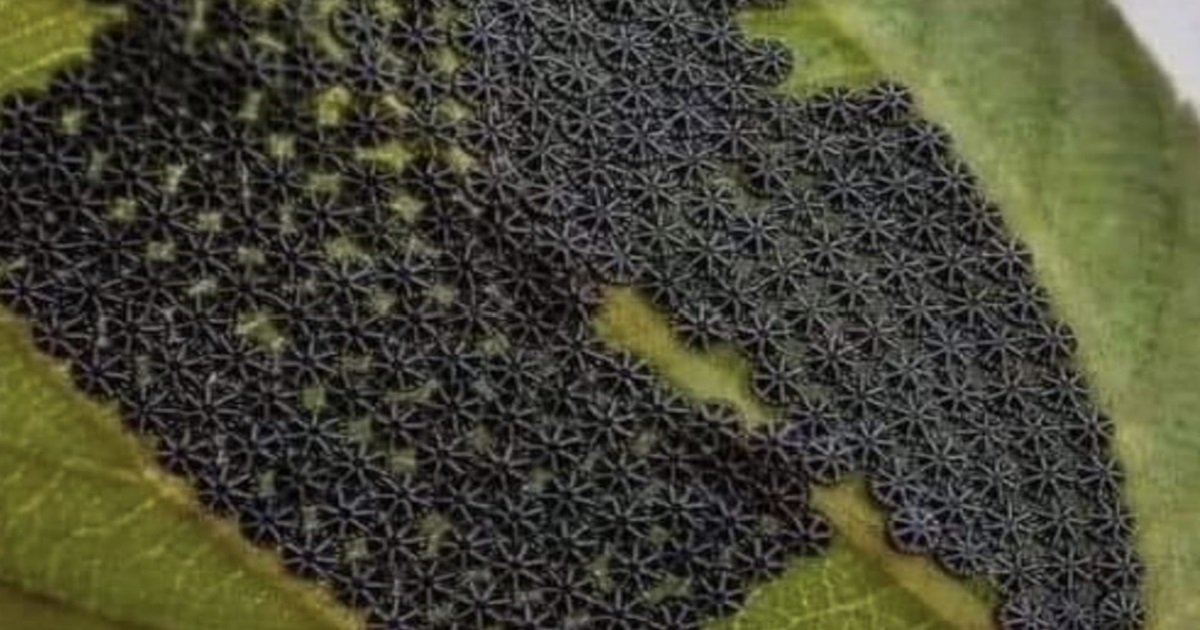
Discovering the Beauty in Your Garden
You can always find me in my garden. Gardening brings me immense joy. Nurturing plants, watching them grow, and seeing my hard work come to life is incredibly fulfilling. However, gardening has its challenges, especially dealing with pests. It’s often hard to determine which pests are beneficial and which ones are harmful.
Uncovering the Mystery
Recently, I saw a photo on social media that perfectly illustrated this confusion. At first glance, the image of a leaf covered in tiny, intricate, black geometric shapes freaked me out. It looked like the leaf was covered in some alien lattice or a strange disease. Many, including myself, wondered what it could be.

Nymphalis Antiopa: The Mourning Cloak Butterfly
After some research, I discovered these patterns are Nymphalis Antiopa butterfly eggs. The Nymphalis Antiopa, or Mourning Cloak butterfly, is a fascinating insect with a unique lifecycle and interesting habits.
The Beauty of the Eggs
The photo I saw was a close-up of these eggs on a leaf, resembling a delicate black lace. The eggs are laid in clusters, each one a perfect geometric wonder. Initially, I thought, “This could be really good or really bad for my garden.”
Beneficial Inhabitants
Fortunately, the Nymphalis Antiopa butterfly is quite beneficial. The larvae, or caterpillars, typically feed on trees and shrubs like willows, elms, and poplars, sparing garden flowers and vegetables. These butterflies also help decompose rotting fruit.

The Lifecycle of Mourning Cloak Butterflies
Watching the lifecycle of these butterflies is fascinating. The caterpillars, black with white spots and spiny bodies, go through several stages, shedding their skin and growing larger each time. Eventually, they spin a chrysalis and undergo their transformation. The chrysalis stage can last from weeks to several months, depending on the climate. When they emerge, they reveal beautiful dark, velvety wings with bright yellow edges and blue spots.
Unique Behavior
Mourning Cloak butterflies hibernate during winter, finding shelter under loose bark, in wood piles, or old sheds. They are some of the first butterflies to appear in spring, often before flowers bloom. Their early appearance and somber wings against the stark landscape give them their name.

Embracing the Balance
As gardeners, we often worry about the immediate impact of insects on our plants. Seeing caterpillars might make us think they will eat everything. However, it’s important to consider the bigger picture. The Nymphalis Antiopa butterfly is a perfect example of nature’s balance. While the caterpillars will eat some leaves, they won’t destroy your garden. By providing a habitat for these butterflies, you contribute to a healthier ecosystem.
What to Do
If you find these eggs or caterpillars in your garden, leave them be. Enjoy the process and watch the transformation. If you’re worried about your plants, gently move the caterpillars to a tree or shrub.

The Adventure of Gardening
Gardening is about balance and harmony between the plants you love and the creatures that share your space. Next time you see something strange in your garden, investigate before reaching for the insecticide. You might discover something amazing, like I did with the Nymphalis Antiopa butterfly eggs.
Each season brings new surprises and challenges, but that’s what makes gardening so rewarding.